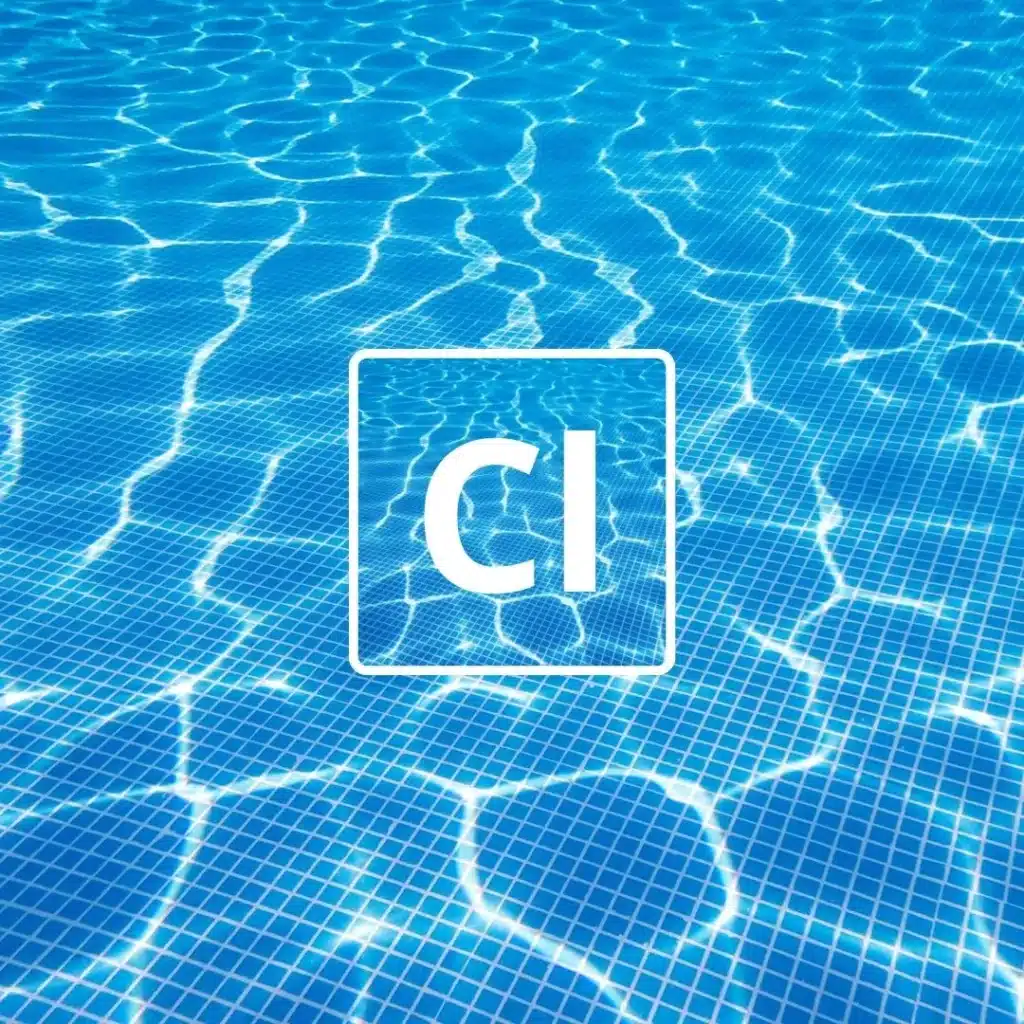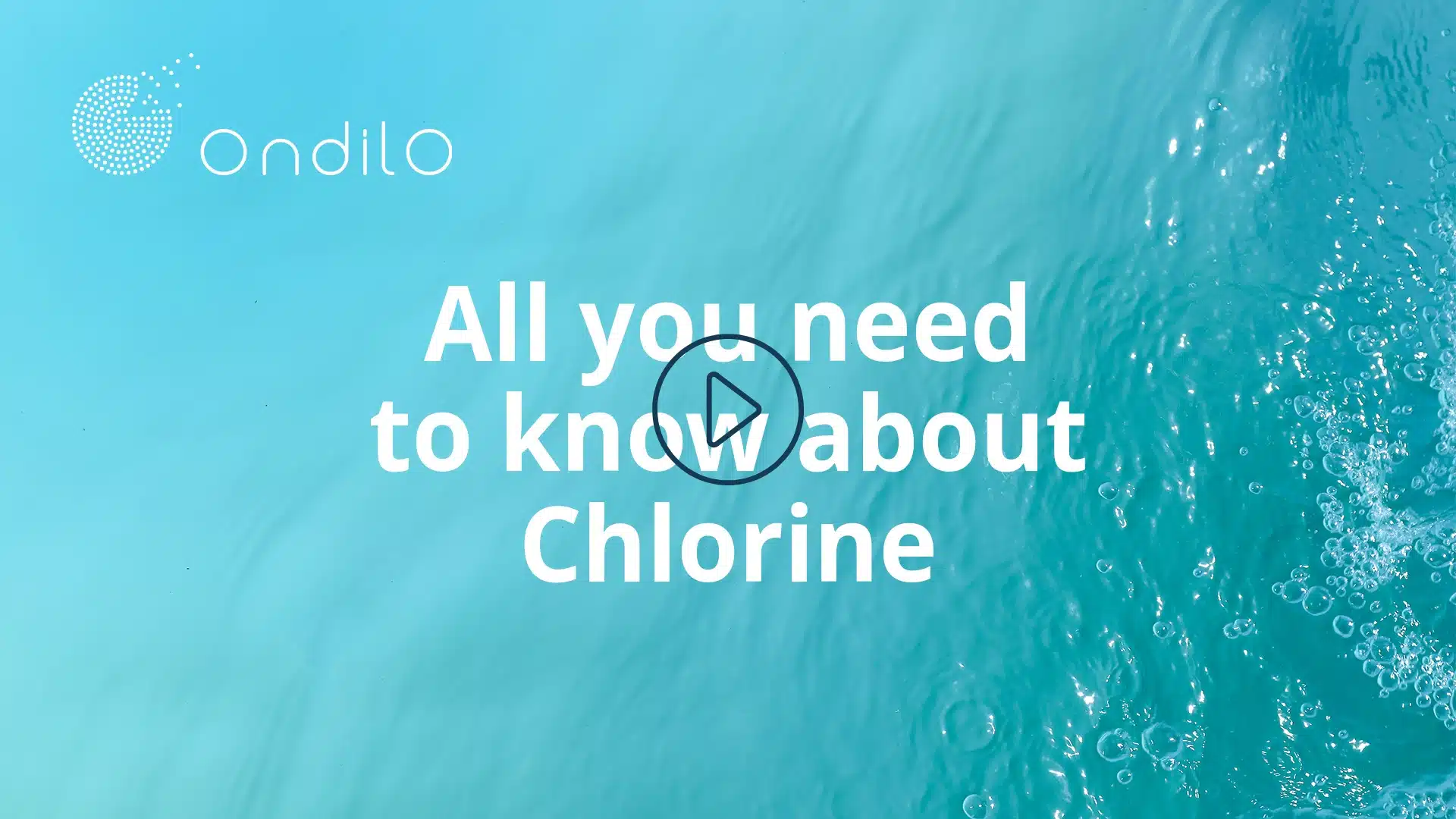In your pool or spa, chlorine treatment disinfects the water by destroying micro-organisms; in particular, it's a powerful algicide. However, when its concentration is insufficient, bacteria grow rapidly in the water. Conversely, too much chlorine affects water parameters, particularly pH, and can pose risks to your health and equipment. The right chlorine balance is therefore essential. In this article, find out what the ideal chlorine level is and all the key steps for increasing or decreasing the chlorine level in your pool or spa.

For disinfected, non-irritating pond water, chlorine levels should be between 1.5 and 2 mg/liter. This ideal chlorine level plays a role in pH balance and also prevents the pH from varying too much. To find out how much chlorine you should use, refer to the recommendations on the product you're using, and adapt it to the volume of your pool.
If you're using an electronic tester or a water analyzer connected with an ORP probe, the ideal rate between 650 and 750 mV. In fact, ORP is an indicator of the level of disinfection of your pool or spa water, measuring the electrical potential delivered by all disinfectant chemical agents, such as active chlorine. The measurement is expressed in milliVolts.
Si vous utilisez une bandelette colorimétrique: la mesure idéale se situe entre 1 et 2,5 ppm. Attention ce système mesure le chlore libre et non le chlore actif.

First of all, measure the water regularly to take prompt action: at the height of the season, chlorine levels should be checked at least once a week, and once a month during active winterizing. See our poolwater analysis guide.
Number two: choose a high-performance chlorine measurement system. Number two: choose a high-performance chlorine measurement system. To measure chlorine, there are either colorimetric strips, photometers or connected water analyzers. The ICO for Pool or Spa measures pH, ORP and water temperature and gives a bathing index that works by color coding. These are more accurate and reliable, as the analyzers take measurements several times a day. Whatever solution you use, the important thing is to know the level of active chlorine, which is solely responsible for disinfecting the water.
Thirdly, it's very important to be aware of the factors that affect water chemistry and influence chlorine efficiency. Water temperature, frequency of pool use, other chemicals used, pH level and chlorine content can all have an effect on chlorine efficiency. Chlorine, for example, is highly sensitive to UV rays and is rapidly degraded by them. This allows you, for example, to adapt the frequency of water quality measurements in summer, adjust filtration times or carry out preventive treatments.
A chlorine level is too high when it exceeds 750 mV (electronic tester or water analyzer connected with an ORP probe) or 3 ppm (with test strips).
As chlorine has a direct interaction with pH, it is likely to be affected as well. The higher the chlorine content, the lower the pH: water becomes acidic (pH below 7.0). Water quality deteriorates and becomes corrosive to metal surface coatings.
Over-chlorinated water is also unpleasant, as the smell of chlorine emanating from the water is strong. This can cause irritation to the eyes and respiratory tract, as well as discomfort to the skin.
In most cases, when the chlorine level is just above the high threshold, or if you have performed a shock chlorine treatment 48 to 72 hours beforehand, it is possible to lower the chlorine level naturally:
If this is not the case, and if the sunshine is not strong enough, it is possible to accelerate the drop in chlorine:
A chlorine level is too low when it's below 650 mV or 1 ppm, depending on the measurement tool you're using.
Since chlorine is responsible for disinfecting water, a level that is too low (below 1 mg/l) inevitably leads to a deterioration in water quality. This can be seen in a change in color (green water or cloudy water) due to bacterial proliferation, followed by algae growth. Chloramines from chlorine oxidation develop. Like high chlorine levels, low chlorine levels can also cause irritation.
Usually, low chlorine levels are the result of forgotten or underdosed treatment, and high pool usage (frequency, number of swimmers). Other situations may also explain low chlorine levels.
It's normal for chlorine levels to drop steadily in the high season if you use non-stabilized chlorine, especially when UV levels are very high.
By adding chlorine to the water in small quantities (if you're using liquid chlorine in particular), and checking the water regularly, it seems fairly straightforward to maintain its optimum value. However, as we saw earlier, the effectiveness of chlorine depends on many parameters. Chlorine levels can vary rapidly.
However, if despite the addition of products, the chlorine level seems to be stuck below the minimum values, there's probably another problem.
There are several reasons for this:
Start by measuring the water's pH. A pH that's too high (above 7.4 for chlorine pools and 7.6 for bromine and salt pools) has a blocking effect on chlorine.
So you need to lower the pH first by adding pH- and, above all, stop adding chlorine to the water until you're back in balance. To vary the pH, the amount of pH- to be added can sometimes be quite significant.
If you're using stabilized chlorine, also check the stabilizer (cyanuric acid) level with specific strips. It's possible that the stabilizer has accumulated in the water, rendering the chlorine ineffective. Unfortunately, the only solution is to dilute the stabilizer by draining some of the water and renewing your pool.
Poor filtration quality often leads to overconsumption of chlorine. Adjust filtration time according to water temperature. Filtration time = water temperature divided by 2, e.g. water at 28°C, filtration time at 14h/day. Also check filter cleanliness. Read on how to properly filter your pool water.
If your pool is treated with salt, check the operation of your chlorinator. It's possible that the setting isn't right, or that your pool needs salt.
Properly managing chlorine levels in your pool or spa is essential to ensuring clean, clear and healthy water. To maintain an optimal balance, check chlorine levels regularly with an appropriate chlorine tester and adjust levels according to the specific needs of your pool. In hot weather, or after frequent bathing, you can slightly increase the chlorine level. In winter, or during periods of low activity, a reduction can prevent skin and eye irritation. Use quality products, follow manufacturers' recommendations and make sure you don't neglect the maintenance of your filtration system. Finally, don't forget that chlorine is only one element of water treatment. The overall water balance (pH, alkalinity, etc.) must be maintained to ensure the longevity and cleanliness of your pool or spa.
| Cookie | Duration | Description |
|---|---|---|
| cookielawinfo-checkbox-analytics | 11 months | This cookie is set by GDPR Cookie Consent plugin. The cookie is used to store the user consent for the cookies in the category "Analytics". |
| cookielawinfo-checkbox-functional | 11 months | The cookie is set by GDPR cookie consent to record the user consent for the cookies in the category "Functional". |
| cookielawinfo-checkbox-necessary | 11 months | This cookie is set by GDPR Cookie Consent plugin. The cookies is used to store the user consent for the cookies in the category "Necessary". |
| cookielawinfo-checkbox-others | 11 months | This cookie is set by GDPR Cookie Consent plugin. The cookie is used to store the user consent for the cookies in the category "Other. |
| cookielawinfo-checkbox-performance | 11 months | This cookie is set by GDPR Cookie Consent plugin. The cookie is used to store the user consent for the cookies in the category "Performance". |
| viewed_cookie_policy | 11 months | The cookie is set by the GDPR Cookie Consent plugin and is used to store whether or not user has consented to the use of cookies. It does not store any personal data. |